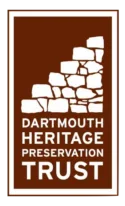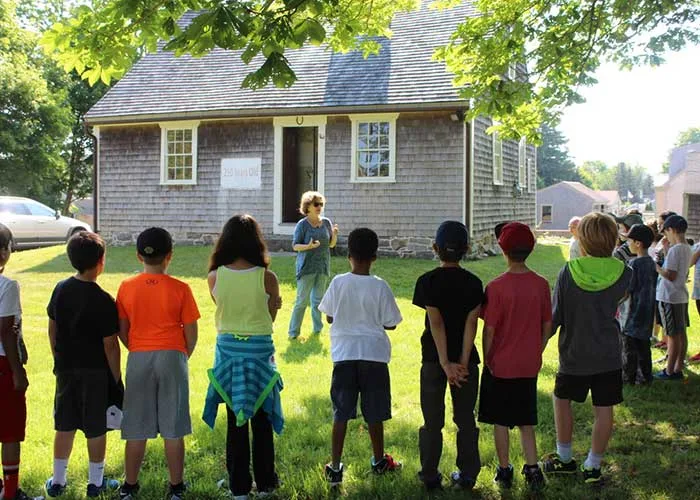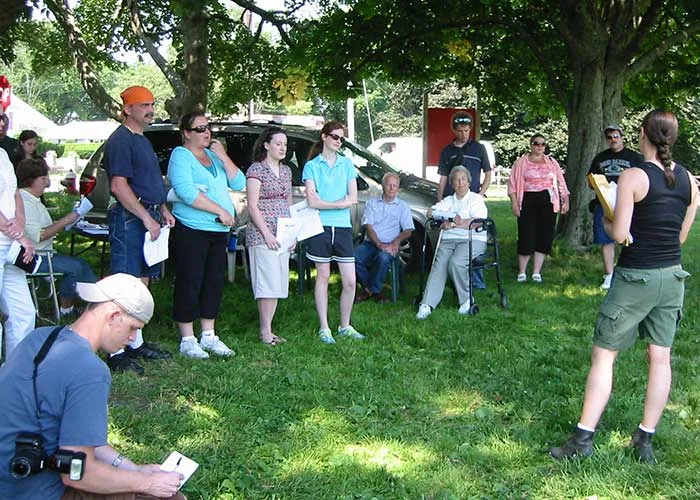This series begins with a ca. 1930s image by local photographer Manuel Goulart. Situated on the corner of Dartmouth and Rockland Streets, the 1762 Akin House was a fascinating subject for this photographer. This little house with a big story to tell, a phrase coined by the late Anne W. “Pete” Baker, still has much to teach us. Sometimes we must reflect on where we started to appreciate how far we’ve come.
The Cape Cod Style––A little background of early houses
Rare is the opportunity to preserve and restore New England 17th century houses although photographs of those old homesteads abound with the disclaimer that this one or that one was demolished and relegated to a landfill years ago. Architectural and research historians continue to invoke their special natures and places in history and we continue to learn from those early building styles, materials, tools and techniques imported from the old world.
In his 1990 seminal book, Antique Houses, Their Construction and Restoration, Edward P. Friedland who has studied 17th century structures and restored 18th century houses in Connecticut, writes about the still beloved Cape Cod style houses. “The one-and-a-half story house (the so-called Cape or Cape Cod) has been much neglected in the literature on early hours, yet the Cape was probably the most frequently used house plan in New England. Capes by the hundreds still dot the New England landscape, and the basic form is still being constructed today. Don’t let these little house fool you; what they lacked in size was often made up for by a quantity of fine interior woodwork.”
Our Georgian era house [1750-1800] was built in the 3/4 one-and-a-half story Cape Cod style.
Recent Preservation and Restoration Work [August 2017- present]
We are fortunate that many 18th century houses remain although few with their original construction, features and finishes––in other words, saved by mostly private homeowners but with modern amenities. Those of us who care about historic preservation do what we can to preserve and restore as much of the original and early modifications as we can. To honor its architectural origins and style, an old house restoration often requires merging the old with the new. But, it must must be done carefully and faithfully.
The status of this property as town-owned property under our stewardship has enabled us to perform preservation and restoration work unencumbered by the need for modern amenities other than electricity.
Our project required sticking with the Secretary of the Interior’s Standards for the Treatment of Historic Properties. Our contractor, Thomas J. Figueiredo, of nearby Marion, applied construction and repair techniques that comply with methods used when our house was built. He was careful and meticulous to save as much of the original materials as possible while intent on keeping our house safe and erect for another 250 years. To do otherwise could have resulted in structural system failures and instability, requiring more structural repairs down the road.
Anyone can identify obvious deficiencies in a structure but without an invasive examination of a structure by a trained restoration carpenter what lurks within can be overlooked. The removal of wall panels and trim boards, lath & plaster and modern wallpapers revealed some great discoveries but also damaged and deteriorated beams, posts and joists, rotted and insect-ridden timbers.
The Figueiredo experience and craftsmanship, keen eye, attention to detail, and high standards have meant the difference between cosmetic work with superficial repairs and the desired end-result of a valuable cultural resource that will last for many more generations.
This series as aforementioned will cover in narrative and photographs the work performed by Tom Figueiredo which began in August 2017 and continues into 2018.
Please look for subsequent parts of this series, coming soon, and also visit Tom’s newly updated website.



I have just purchased a 1734 cape cod cape and restoring to the best of my ability on a retired firefighter pension i also restored civil war era homes found your information valuable